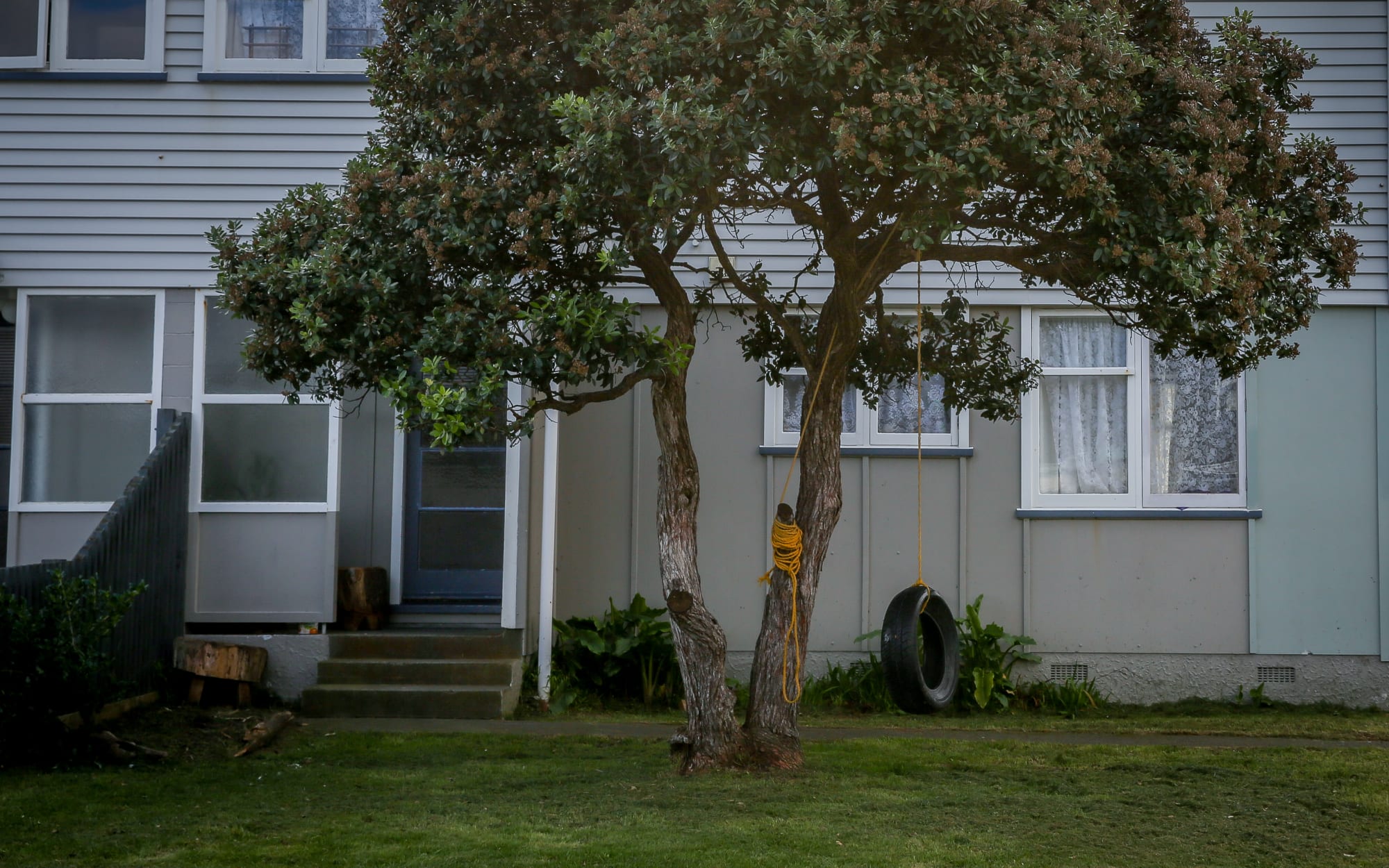The number of children living in poverty has remained stubbornly static in recent years, and organisations trying to turn that around say they're only getting busier.
Matilda and her three children get through the week on a benefit and part-time work like this: "We'll have a nice meal - chicken, meat or sausages - today; tomorrow we'll have tea and bread, or tea and biscuits," she says.
"And then the next day, we'll have another nice meal, and then the next day it's only tea and bread, or tea and biscuits."
The Auckland woman, in her third year of a social work degree, is on a solo parent benefit. It's enough to cover rent and power for herself and the children, aged five, 18 and 22, but leaves her with a $400 shortfall each week for everything else.
To try and cover the hole in her weekly budget, Matilda works part-time - something she manages to fit around raising a family and full-time study.
"I have to try and juggle the little income that I get on the side, and that's hard," she says.
Despite her circumstances, Matilda is optimistic.
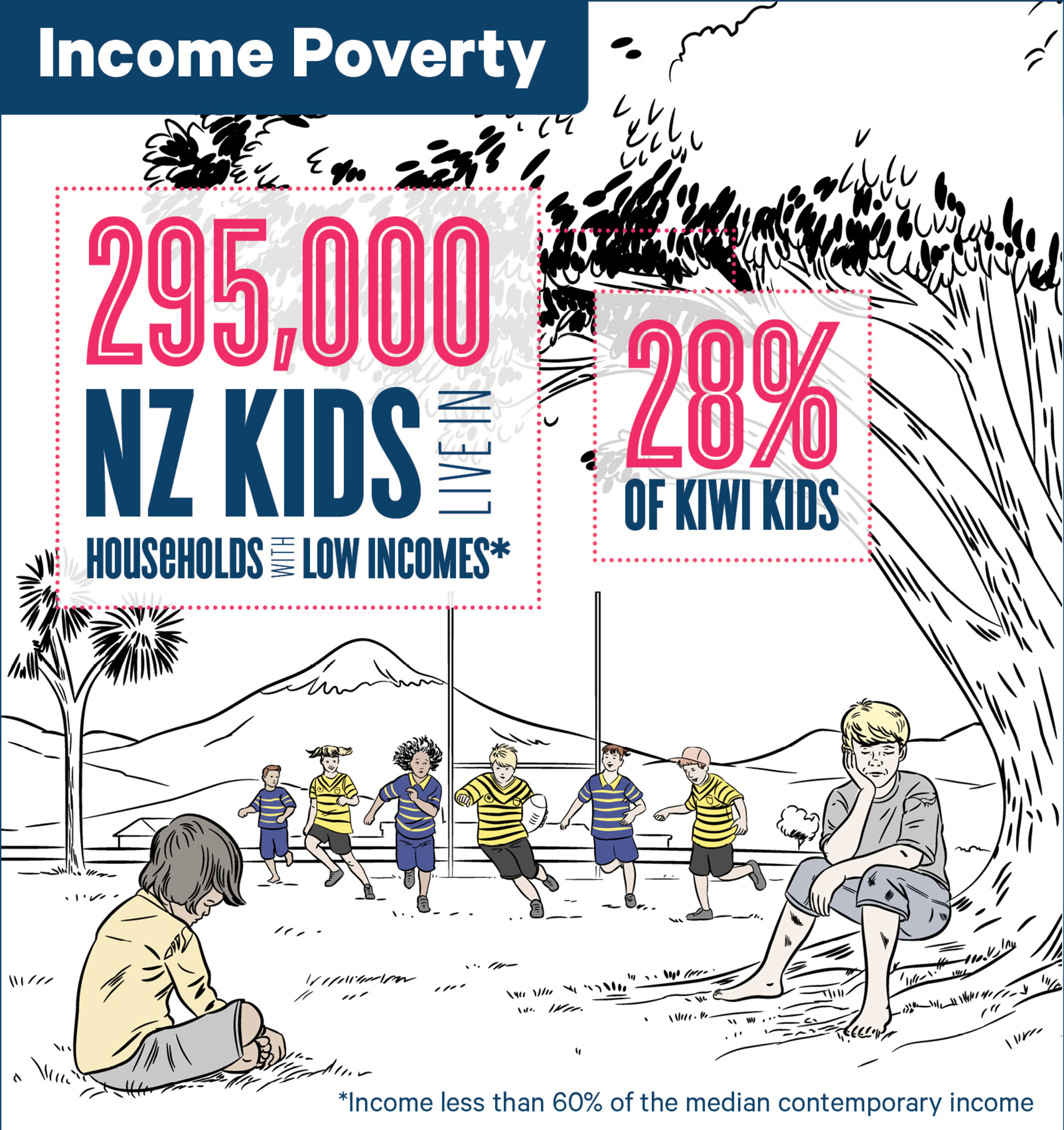
Photo: Supplied / Child Poverty Monitor 2016
"The kids are happy, they can't complain because I always tell them, 'You should be grateful you've got a bit - some people don't have anything at all.'"
There's no single statistic to point to tell whether child poverty rates are improving or not.
Instead, a complex web of measures traces incomes, housing costs and material deprivation.
The Ministry of Social Development's Household Incomes Report defines child poverty as being in a household earning less than 60 percent of the median income after housing costs.
But within that, there are two ways of looking at the figures.
The 'moving line' measure uses relative income - if the median rises, then so does the poverty line.
Using this measure, 295,000 children were living in poverty in 2015, the most recent year for which there are figures, up from 240,000 in 2007.
The 'moving line' can be misleading because if median incomes worsen - due to an economic crash, for example - then it would show poverty decreasing because the median income would fall.
The second measure uses an 'anchored line' based on 2007 median incomes.
On this basis, the number of children living in poverty has decreased from 240,000 in 2007 to 230,000 in 2015.
Another way of measuring poverty is looking at material hardship - which the ministry defines as going without at least seven of 15 items on a set list, such as fresh fruit and vegetables.
Between 2007 and 2016 this measure remained unchanged, at 14 percent of all children.
Severe hardship - going without nine or more of the items - has increased though, from 6 percent to 8 percent of children (85,000).
The latest Child Poverty Monitor report - authored by Otago University researchers and published by the Office of the Children's Commissioner - found there had been a "promising decline" in poverty rates between 2001 and 2007.
"[That] has not been maintained."
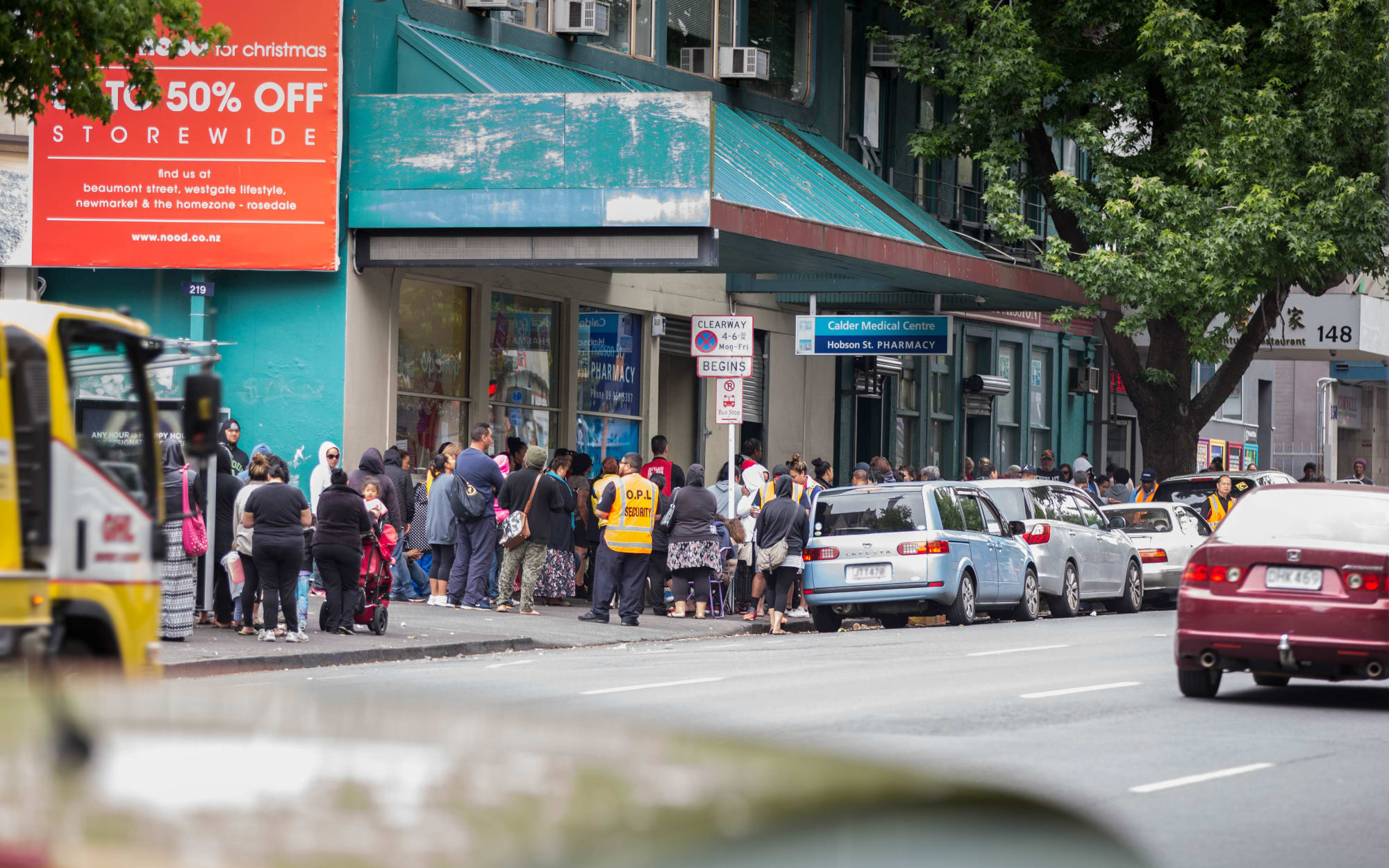
People queue outside Auckland City Mission in the lead-up to Christmas, 2015. City Missioner Chris Farrelly says school holidays are a particular time of hardship. Photo: RNZ / Kim Baker-Wilson
'A drop in the ocean'
KidsCan chief executive Julie Chapman says her organisation is working in 700 schools across the country, feeding 26,000 children a week.
That need is growing: in 2011, 11 percent of a school roll was in need of food, but now that figure is 21 percent.
"Some of the items that perhaps were affordable before, budgets did stretch to them, are now becoming out of reach," Ms Chapman says.
"If you're struggling to pay rent, or you have a bill for the car, your food budget is really the thing that starts to get eaten into."
Auckland City Missioner Chris Farrelly has also noticed a growing numbers of people needing help through the mission's food banks.
School holidays can be a particular time of dread for families on tight budgets, when children who have been getting fed at school are at home round-the-clock.
"Come the school holidays, the tap is turned off," he says.
"The child isn't going to school, so the food that's being provided on a daily basis doesn't exist, so it's up to the family who didn't have enough in the first instance, to provide food."
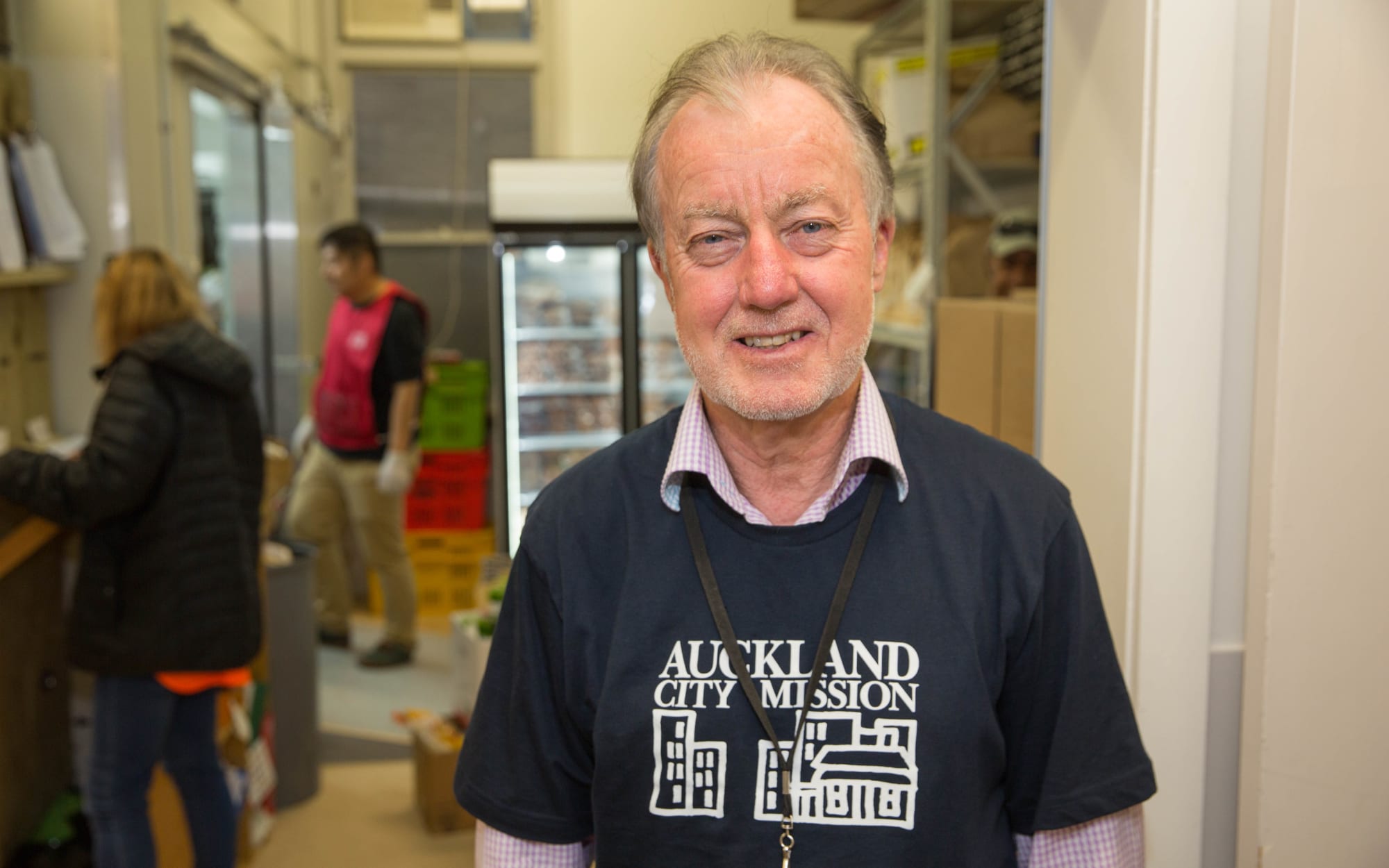
Auckland City Missioner Chris Farrelly Photo: RNZ / Cole Eastham-Farrelly
Ms Chapman says in the last five or six years she has also seen a rise in demand for personal hygiene products - deodorant, shampoo, pads and tampons.
That's something Matilda is familiar with.
"What happens if you don't have enough money [to buy sanitary products], and it stops you from going in to your study, stops you from going in to work, because you have no protection?
"And then your money gets cut and then for the following week there's nothing to cover all those other expenses."
In the 2015 Budget, the government announced it would increase benefits for families with children by around $25 a week, as part of a package to tackle child hardship - the first time any government has raised the core benefit rate since 1972.
The increases kicked in on 1 April last year, but Matilda says it hasn't made much difference to her.
"It's of no use, because what I need is $100 more to meet my expenses. If that $25 is added, it's still not helping."
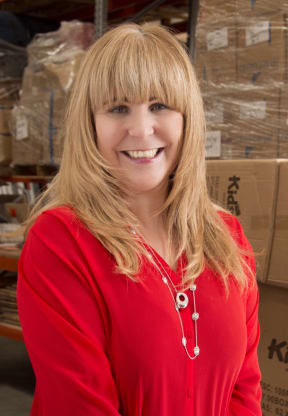
KidsCan chief executive Julie Chapman Photo: Supplied / KidsCan
Several single parents and families receiving benefits over the last year told RNZ they did not even get the full $25.
One parent says she only ends up with half of that by the time other benefits, such as the accommodation allowance or temporary additional support, were taken into account.
"When a weekly deficit ... is in the hundreds, $25 is like a drop in the ocean," another single mother - who did not wish to be identified - says.
The Ministry of Social Development says it does not know how many families receive the full $25 a week, as it would have to go through each person's file to find out.
The effect of the increase will be picked up in its 2017-2018 Households Incomes Report, which will not be published until 2019, it says.
Julie Chapman says while the $25 increase is a start, she would like to see it doubled.
"I'd like to see an extra $50 or $60 a week going into people's pockets, and wages going up as well."
This election's competing families packages
- National: In this year's Budget, the government announced a $2 billion family incomes package, which includes tax changes, a boost to Working for Families and an increase to the accommodation supplement. The government estimates it will put, on average, an extra $26 a week in the pockets of 1.3 million families.
- Labour: Earlier this month, Labour announced its alternative families package. It includes scrapping National's planned tax cuts, further boosting Working For Families, a new $60 weekly payment for families with babies and toddlers, and a winter energy payment for pensioners and beneficiaries.
- Greens: The Green Party has also unveiled a $1.5bn families package, which includes increasing benefits and removing financial penalties and sanctions. Working for Families would also be boosted and the minimum wage would be increased.
RNZ's election series Is this the Brighter Future? examines the government's record since it was elected in 2008. Read more here.
Main image: File photo (RNZ / Alexander Roberston)
